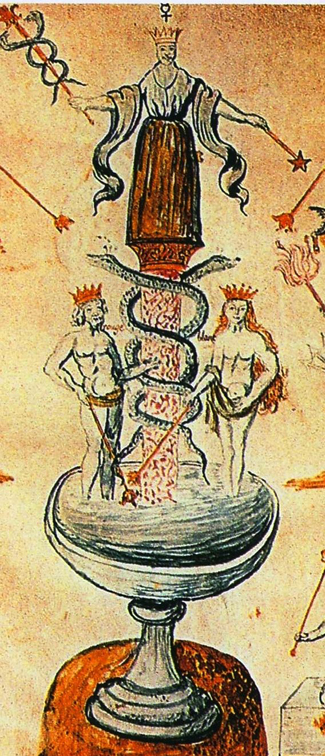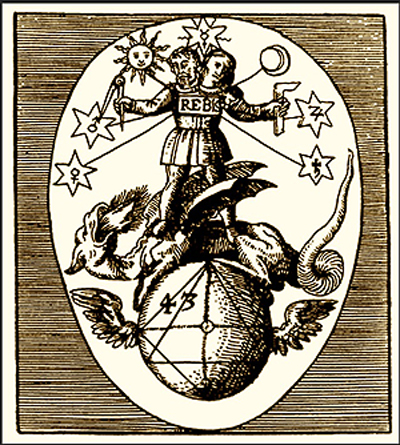Printed in the Fall 2018 issue of Quest magazine.
Citation: Mayer, Gwynne, "Alchemy of Gender" Quest 106:4, pg 10-11
By Gwynne Mayer
The minute I heard my first love story,
I started looking for you, no knowing
How blind that was.
Lovers don’t finally meet somewhere.
They’re in each other all along.
—Poem inspired by Rumi
Although the soul, or Self, has no gender, our earthly personas are definitely wrapped around our gender roles. We have genetic memories of being in union with the One, and we long to go back to that state, but in our horizontal, three-dimensional plane, we seek to fulfill this mission of union through relationship. To understand gender and the sexual roles we play in our earthly bodies, we must look at the psychological archetypes representing our origins.
The psychologist C.G. Jung found that gender roles were socially differentiated. They represented the ego, or lower self, as opposed to the qualities of the higher Self, which are the alchemical combination of the inner feminine and masculine archetypes known as the anima and animus.
Anima is derived from a Latin word meaning current of air, wind, breath, the vital principle, life, soul. Jung’s use of this word differs from its Latin meaning. For him, anima refers to the unconscious feminine dimension of a male, which can often be forgotten or repressed in daily life. It is often manifested in traits such as vanity, moodiness, bitchiness, and touchiness. The man often lives out his anima by projection. He looks for his feminine counterpart to complete him, but in reality he is seeking the feminine within. As a result, he sees women only through his own projections.
 |
 |
|
| These alchemical images from the early modern era reflect the duality of masculine and feminine in the psyche. In the first image, the androgyne surmounts a base around which the caduceus is wrapped, symbolizing the integration of the subtle masculine and feminine energies that travel up and down the spine. Above the figure’s head is the astrological symbol for Mercury, which often represents the androgyne. In the second, a two-headed figure, again surmounted by the Mercury symbol, represents the integrated masculine and feminine energies. The figure is stepping on a dragon, indicating mastery of the prana or life force. | ||
Animus in Latin means rational soul, life, mental powers, intelligence. Jung again uses it in a different way from its Latin meaning. For him, the animus is the unconscious masculine dimension in the female psyche. This masculine element can often be inhibited and suppressed. Again, it is often lived out in projections: a woman looks externally for the other to complete herself while in reality she is seeking the inner masculine. Sometimes she lives out the animus in such forms as mood disorders and overachieving.
We are constantly working with our own dual active and receptive qualities, even though we tend to project them outside ourselves. Nevertheless, in order to psychologically progress and reach greater internal balance and harmony, both men and women need to recognize and embrace the opposite gender in their own characters. By recognizing the inner image of the opposite sex within us, we can free ourselves from the trap of projections. We can finally learn to accept others of both genders as they are, and we can stop expecting them to fulfill our unconscious needs. We can integrate our own uniqueness and live out our own individual purpose without having to be augmented by the opposite sex. That does not mean avoiding partnership, but rather partnering from an individuated state of being rather than one of longing and need.
In our society, we often see females discovering the masculine qualities in their psyches, as well as males discovering their feminine qualities. We no longer have to be trapped by traditional gender roles, but can develop further understanding and balance if we bring those masculine-feminine qualities to the forefront and move toward androgyny. Androgyny, in Jungian terms, refers not to bisexuality but to the harmonious integration of male and female qualities in ourselves.
How do we see our projections, and realize that these are inner realities we are externalizing? How do we individuate, becoming more aware of our personal processes? How do we balance and connect the roles in our outer world with the masculine and feminine within? How is all of this connected to our esoteric and Theosophical studies?
Working with projections and images in dreams and fantasies, as well as meditation and contemplation, enables us to become more actualized and more responsible. By keeping a dream journal, we can see how we play out these roles and conditions in our dreams. As we evolve and become more aware, we start to see how we are living out these scenarios; we are also more able to cope with what they are showing us.
Evolving into our inner worlds may take repeated lifetimes of experiences in male or female roles, but eventually we move into a state of Oneness. As we do so, we further the evolution of both the horizontal, “earth” world and the “vertical,” cosmic world from which we originated.
Gwynne Mayer, M.A., is a retired psychotherapist and educator with forty-five years of experience in depth studies of world religions, ancient mysteries, esotericism, and divination.

